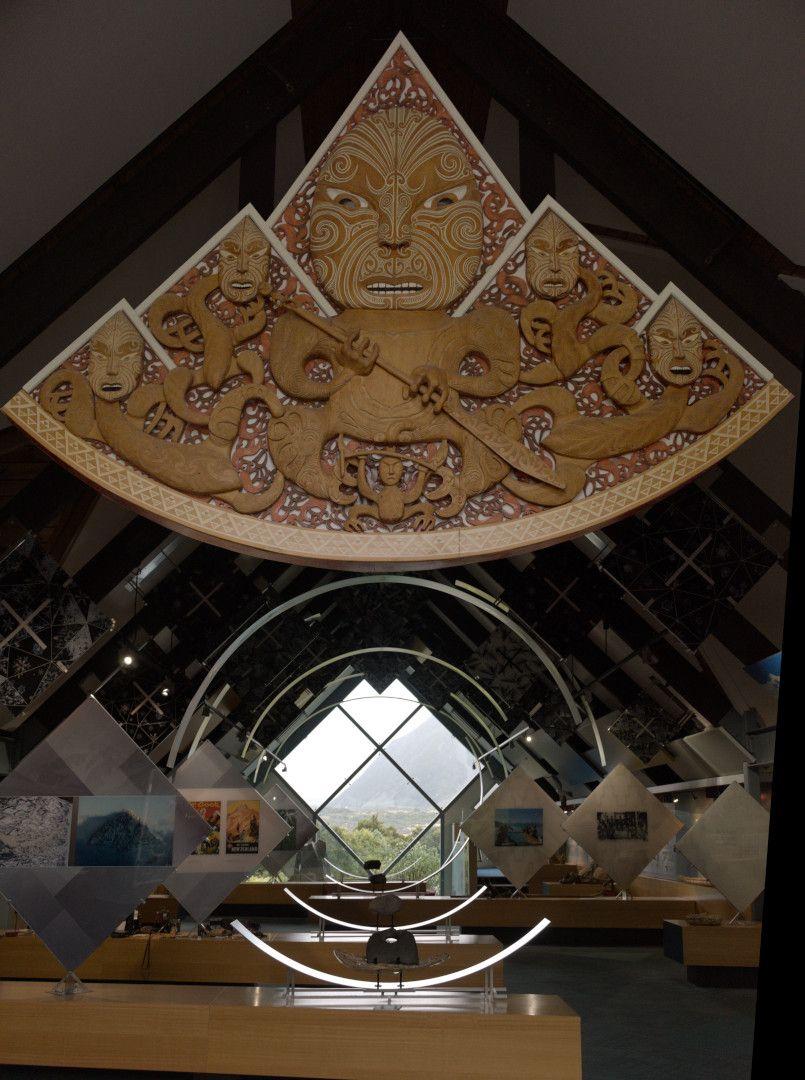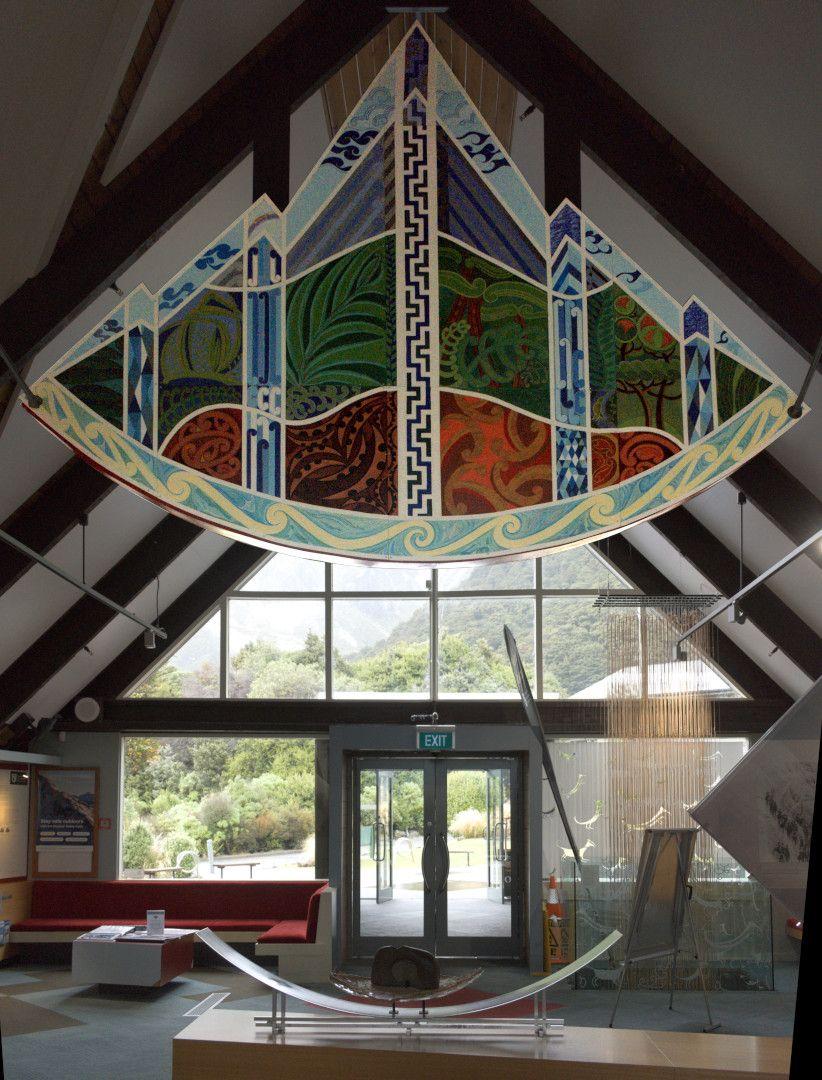Aoraki and His Brothers
Cliff Whiting
Arowhenua Runaka
Type
- Carving
- Painting
- Whakairo
Medium
- Paint
- Wood
Dimensions
- H2970 x W4540mm

Cliff Whiting and members of Arowhenua Runaka, 'Aoraki and His Brothers' (1988), Department of Conservation Visitors Centre, Aoraki Mt Cook
Image: Bronwyn Holloway-Smith, Public Art Heritage Aotearoa New Zealand, 2021


- DETAILS
- MAP
Description
From an information panel in the Visitor Centre:
“The carving which hangs above as you enter the Aoraki/Mount Cook Visitor Centre represents Aoraki and his brothers, including Tawhirimatea – the wind.” From left to right these are named as: Rārakiroa, Rakirua, Aoraki, Tawhirimatea, Rakiroa and (below Aoraki) Tū Te Rakiwhānoa.
“The shape and background patterning represent that of a spread, woven cloak with a decorative border of a taniko pattern. The taniko pattern contains tōtara from Tongariro National Park (dark timber), tōtara from Aoraki/Mount Cook National Park (light timber) and pōhutukawa from Moturua Island, in the Bay of Islands Maritime Park. The inclusion of timber from Tongariro symbolises the union of the first national park in New Zealand with Aoraki. Bay of Islands is the home of the carver – Cliff Whiting.”
“The white moko – like the moko of chiefs – bestows identity and mana to the most sacred part of the body, the head. The moko of Aoraki and his brothers signifies the patterns of snow and water.”
From a postcard purchased in the Visitors’ Centre: “Designed and built by Cliff Whiting, this Maori carving welcomes visitors to the Aoraki/Mount Cook Visitor Centre. The Ngai Tahu legend tells of Aoraki and his brothers being capsized in their canoe. The brothers climbed on to the high side of the canoe, but were turned to stone where they remain today. The back of the carving was painted by members of Arowhenua Runaka and tells Ngai Tahu stories of the West Coast.”
